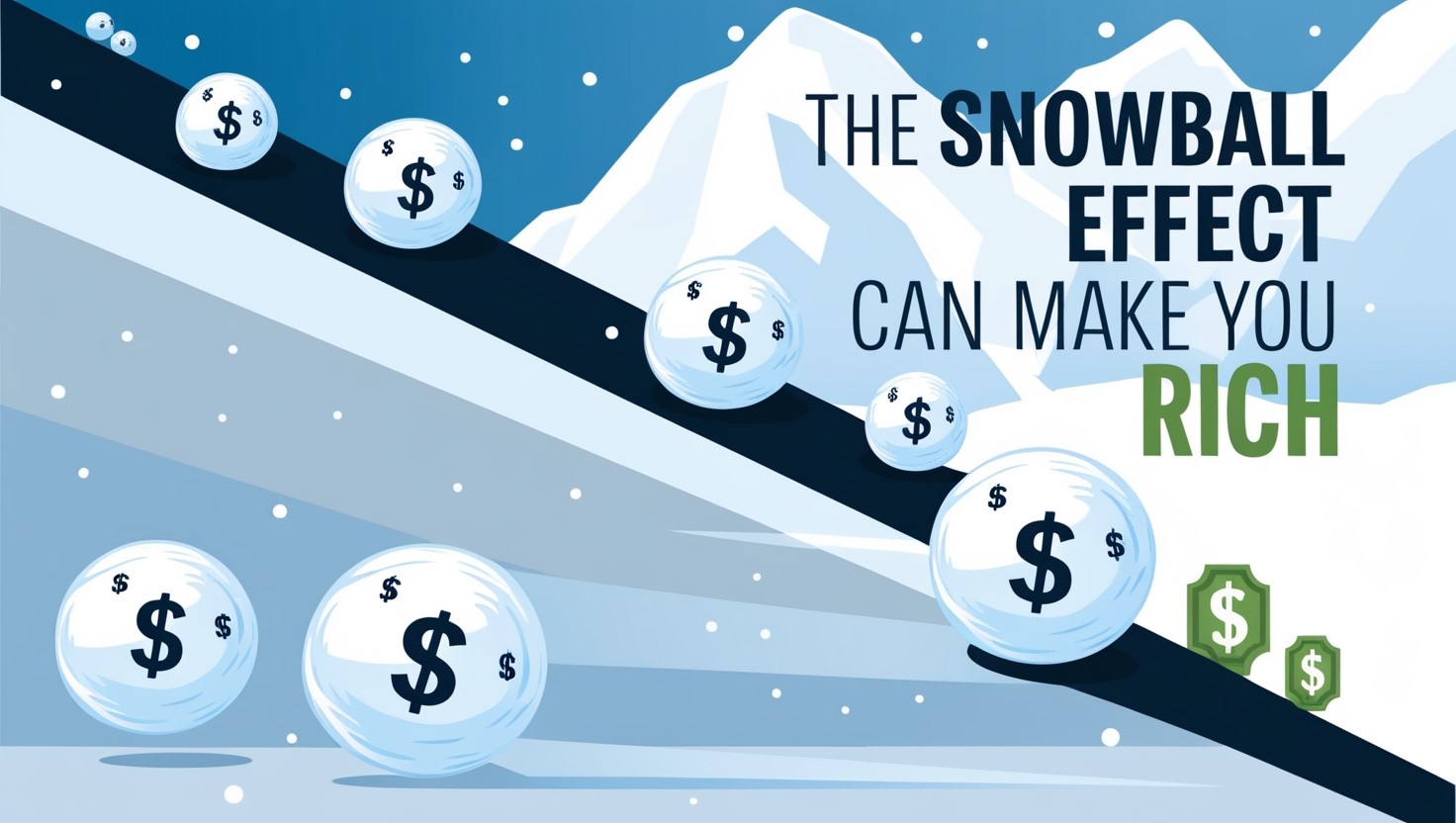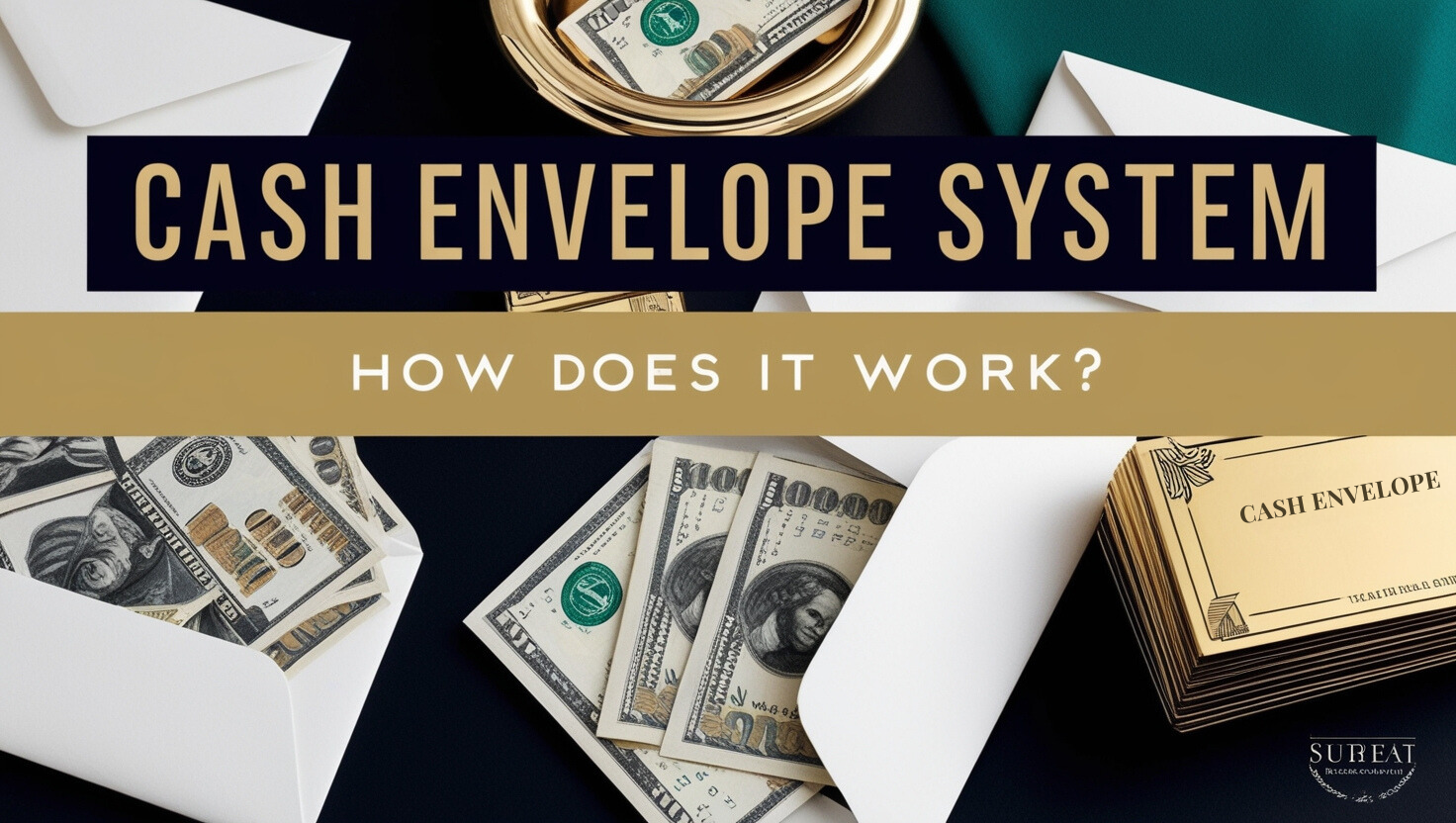Imagine rolling a small snowball down a hill. As it picks up speed, it also picks up more snow, growing larger and stronger with each turn. Snowball investing works much the same way. It’s about starting with small, manageable investments and letting them grow over time through the power of compounding. You don’t need a huge sum to begin—just consistency, patience, and a bit of time.
Snowball investing taps into the power of compounding interest, allowing even modest contributions to build upon themselves. The beauty of this approach is that each new addition, no matter how small, adds to the whole, pushing the “snowball” to grow faster and further. The result? Over years, or even decades, these small steps can turn into substantial wealth.
This article is here to show you how snowball investing works and why it’s a strategy worth considering. It’s not a get-rich-quick approach but a steady, intentional path to financial growth. Starting small, sticking to it, and allowing your investments to grow with time are the keys to building real, lasting wealth. So if you’ve ever thought that investing was only for people with big funds, snowball investing might just change your mind.
What is Snowball Investing?
Snowball investing is all about momentum. It’s the idea that you can start with a small amount, stay consistent, and watch your investments grow over time. Like a snowball rolling down a hill, it might start out small, but as it picks up speed and more snow, it grows bigger and stronger. Snowball investing follows the same principle, relying on the power of compounding and steady contributions to turn modest investments into substantial wealth.
The essence of snowball investing lies in compounding, where your returns are reinvested, allowing them to generate even more returns. This compounding effect means that each little boost adds up, increasing the size of your “snowball” with every turn. The beauty of this approach is that you don’t need a large amount to get started. Small, regular contributions have the power to grow significantly over time.
For many people, snowball investing feels achievable because it doesn’t require an intimidating upfront amount. It’s about showing up consistently and letting time and compounding do the heavy lifting. Whether you’re putting aside a few dollars a week or making small monthly contributions, the key is to keep going. Over years, those small efforts add up, creating a snowball effect that can lead to real wealth.
Snowball investing is a reminder that wealth isn’t only for those who start big—it’s for those who start small and stay committed. With patience, your steady contributions can grow into something remarkable, all thanks to the quiet, powerful momentum that snowball investing brings.
The Mechanics of Compounding
At the heart of snowball investing lies compounding, a simple but powerful concept that can turn small, steady investments into significant wealth over time. Compounding is what happens when your money not only grows but grows on itself—earning returns not just on your original investment but also on the gains that have already accumulated. It’s like planting a seed that grows into a tree, which then produces more seeds, eventually creating a whole forest.
Here’s how it works: let’s say you invest a modest amount and earn a return. Instead of spending that return, you reinvest it. Now, your next round of returns is calculated on a larger amount, creating a cycle where each reinvested return leads to even more growth. With each cycle, your investment “snowball” gains a bit more size and momentum, moving faster and accumulating more wealth as it rolls forward.
What’s remarkable about compounding is that it rewards time and consistency. The longer you allow your investments to grow without interruption, the more powerful compounding becomes. Small gains that might seem almost invisible at first begin to add up in noticeable ways. Over years, or even decades, this effect turns modest contributions into meaningful wealth.
Compounding doesn’t demand a large starting amount; it simply requires a steady approach and the patience to let time work its magic. This is the true engine behind snowball investing, and it’s why even small, regular investments can become the foundation of real financial growth. By understanding and trusting in the mechanics of compounding, you’re setting yourself up to watch your wealth expand far beyond the sum of your individual contributions.
Starting Small: How Even Modest Investments Make a Difference
When it comes to building wealth, it’s easy to feel that you need a big sum to get started. But with snowball investing, even the smallest contributions can make a big impact over time. The beauty of starting small is that it lets you begin now, using whatever you have, instead of waiting for the “right” moment or a larger amount. Snowball investing shows us that what matters most is consistency, not size.
Let’s say you begin with just a few dollars each week. At first, it might seem almost invisible. But as you add to it each month and reinvest any earnings, your investment begins to grow. Each small addition builds on the last, creating a pattern of steady, compounding growth. Soon, what started as a modest investment has gained enough traction to feel substantial. That’s the power of snowball investing—small steps that, when taken consistently, lead to something much larger.
Starting small also has a practical advantage: it helps you build the habit of investing without feeling overwhelmed. As you see your contributions grow, you’re likely to feel motivated to add a little more whenever possible. It becomes a positive cycle, where each small addition brings you closer to your financial goals.
Remember, the size of your initial investment doesn’t define your potential for growth. Snowball investing is about trusting the process, making regular contributions, and letting time and compounding work together. With patience and commitment, even modest investments can turn into meaningful wealth over the years. Starting small is a simple but powerful way to take control of your financial future—one steady step at a time.
Key Strategies to Maximize Snowball Investing
Snowball investing thrives on three simple but powerful principles: consistency, reinvestment, and patience. By following these strategies, you can maximize the growth of your investments and let compounding do the heavy lifting. These strategies don’t require any special knowledge—just the commitment to stay the course and keep your snowball rolling.
1. Consistency
The foundation of snowball investing is consistency. Regular contributions, even if they’re small, create a steady rhythm that builds your investment over time. Setting up automatic deposits is one way to stay on track, making it easy to stick with your plan without having to think about it every month. This habit of regular investing, however modest, keeps your momentum going and allows the compounding effect to kick in, transforming those steady contributions into substantial growth.
2. Reinvestment
Reinvesting your returns is a key part of the snowball effect. When you reinvest, you’re allowing your earnings to generate their own returns, adding another layer to the growth of your investment. This reinvestment cycle is what makes compounding so effective. Each time you earn, you reinvest, which means that every dollar you put in continues to grow—not just by your initial contributions, but by the returns those contributions generate. It’s a simple move that amplifies your growth over time.
3. Patience
Patience might be the hardest part of snowball investing, but it’s also the most rewarding. The true power of compounding and snowball investing reveals itself over the years, not overnight. The longer you allow your investment to grow undisturbed, the more it can build on itself. This approach isn’t about quick wins; it’s about steady progress toward meaningful, long-term wealth. Trusting the process and sticking with it allows your snowball to grow in a way that short-term strategies simply can’t match.
Together, these strategies—consistent contributions, reinvestment, and patience—form a solid approach to snowball investing. They allow you to make the most of even modest investments and build wealth over time. With each small step, you’re moving closer to financial freedom, one steady, committed action at a time.
Choosing the Right Investments for a Snowball Strategy
When it comes to snowball investing, choosing the right types of investments is crucial. The goal is to find options that allow for steady growth over time, with reinvestment potential that can fuel compounding. A few key factors can guide you toward investments that align with the snowball approach, including stability, growth potential, and low fees.
1. Index Funds and ETFs
Index funds and exchange-traded funds (ETFs) are popular choices for snowball investing because they offer broad market exposure, diversification, and often lower fees. By investing in a variety of stocks within a single fund, you’re spreading your risk while positioning yourself for gradual, long-term growth. These funds are built to grow with the overall market, which aligns well with the steady progress of a snowball strategy. Plus, many index funds and ETFs automatically reinvest dividends, adding another layer to your investment’s compounding power.
2. Dividend-Paying Stocks
Dividend-paying stocks can also be valuable for a snowball strategy, especially if you choose to reinvest the dividends. Dividends provide a reliable income stream that, when reinvested, can significantly boost your investment over time. Look for companies with a strong history of consistent dividend payments and stable growth. Reinvesting dividends creates an automatic compounding effect, adding to your snowball’s growth without requiring additional contributions.
3. Bonds and Bond Funds
While stocks and funds can offer growth, bonds and bond funds add stability to your portfolio. They don’t have the same growth potential as stocks, but they provide a steady income that can be reinvested. Bond funds are particularly appealing for those looking to balance risk and reward, giving you a safer option that still contributes to your snowball over time. Including bonds helps you weather market ups and downs, keeping your strategy resilient as your snowball grows.
4. Low-Fee Options
Whatever investments you choose, it’s wise to focus on options with low fees. High fees can eat into your returns, slowing down your snowball’s progress. Index funds, ETFs, and certain brokerage accounts offer low-cost choices that help you keep more of your gains. By reducing fees, you’re ensuring that more of your money is put to work in growing your investment.
Choosing the right investments for a snowball strategy doesn’t require anything complicated—it just requires a focus on steady, compounding growth with an eye toward diversification and cost-effectiveness. These choices allow you to build momentum with minimal barriers, letting you enjoy the benefits of snowball investing while keeping risk in check. With the right mix of assets, your snowball can keep rolling steadily forward, growing stronger with each turn.
Snowball investing is a powerful strategy, but certain missteps can slow down or even derail your progress. To keep your investment snowball rolling smoothly, it’s important to recognize and avoid these common pitfalls. By staying aware of these mistakes, you’ll set yourself up for steady, long-term growth.
Common Mistakes to Avoid in Snowball Investing
1. Chasing Quick Gains
One of the biggest mistakes in snowball investing is getting caught up in the search for quick wins. Snowball investing is all about patience and consistency, not rapid growth. When you’re tempted to jump into high-risk investments for the chance at fast returns, remember that snowball investing thrives on stability. Stick to your steady approach, and let time and compounding work for you.
2. Withdrawing Too Soon
The power of snowball investing comes from reinvestment and compounding over time. By withdrawing funds early, you interrupt the growth process and reduce the snowball’s momentum. Even if it’s tempting to cash out when your balance starts to look impressive, holding off on withdrawals allows your investments to grow to their full potential. Think of your snowball as a long-term project that benefits from uninterrupted growth.
3. Ignoring Diversification
Putting all your eggs in one basket can make your investment vulnerable to market swings. Diversification helps you spread risk across different asset types, giving your snowball a better chance to grow steadily over time. By mixing investments like stocks, bonds, and index funds, you’re creating a foundation that can weather market changes and keep your progress on track.
4. Neglecting Fees
High fees can quietly chip away at your returns, slowing down your snowball’s growth. Always keep an eye on management fees and transaction costs. Choosing low-fee options, such as index funds or no-fee brokerage accounts, ensures that more of your money goes toward compounding rather than covering fees. Over time, these small savings make a big difference in your snowball’s size.
5. Letting Emotions Drive Decisions
Investing naturally involves ups and downs, but emotional reactions can lead to costly decisions. Selling off investments during a downturn or jumping on trends during a high can disrupt the careful momentum of snowball investing. To stay on course, remember the value of consistency. Trust your strategy, avoid reactive decisions, and allow time to work in your favor.
Avoiding these common mistakes allows you to stay focused on the steady growth that snowball investing is all about. By staying patient, diversified, and mindful of costs, you’re setting up your investments to reach their full potential. Remember, snowball investing isn’t about fast gains—it’s about building wealth through simple, powerful habits that add up over time.
The Long-Term Benefits of Snowball Investing
Snowball investing isn’t about making fast money—it’s about building steady, lasting wealth. Over time, even modest investments can transform into a significant financial foundation, giving you the kind of security and freedom that only grows with patience. The long-term benefits of snowball investing are powerful, and they reach beyond just a larger bank balance.
1. Financial Independence
One of the greatest rewards of snowball investing is the path it creates toward financial independence. With each year that your investments grow, you’re taking a step closer to having more choices and control over your future. When you allow compounding to work over decades, your snowball can grow to a point where it provides you with the income and stability you need to make decisions on your terms—whether that’s retiring early, changing careers, or traveling.
2. Peace of Mind
Snowball investing builds a safety net that brings peace of mind. Knowing that you have steadily growing investments to rely on can ease the stress of unexpected expenses or life changes. This sense of security doesn’t come from chasing quick profits but from the quiet, dependable growth that builds over time. With snowball investing, you’re preparing for the unknown with a foundation that can withstand life’s ups and downs.
3. Achieving Long-Term Goals
Many of life’s biggest milestones—like buying a home, funding a child’s education, or planning for retirement—require substantial resources. Snowball investing is a smart way to work toward these goals. By starting early and staying consistent, you’re giving your future self the gift of time and compounding. When you stay committed to your snowball strategy, you’re setting the stage to achieve those larger goals without scrambling or relying on debt.
4. Leaving a Legacy
For those looking to build wealth that extends beyond their own needs, snowball investing can also be a way to leave a legacy. A well-built portfolio can become a resource for future generations, providing financial stability for your family or supporting causes you care about. By starting small and letting your investments grow over decades, you create a legacy that reflects the power of patience and consistency.
The long-term benefits of snowball investing are about more than numbers—they’re about freedom, security, and the ability to meet your goals. By choosing to invest steadily, you’re creating a future where financial worries take a back seat, allowing you to focus on what truly matters. Snowball investing reminds us that wealth isn’t built overnight; it’s built over a lifetime, one small investment at a time.
Final Thoughts: Building Wealth One Step at a Time
Snowball investing shows us that wealth doesn’t require a large starting sum or a complex strategy. It’s about taking small, steady steps and allowing time and compounding to do the rest. By committing to regular contributions, reinvesting your gains, and trusting the process, you’re building a path to financial freedom, one decision at a time.
The beauty of snowball investing lies in its simplicity. You don’t have to outsmart the market or take big risks. Instead, you’re creating a foundation that grows stronger with each passing year, bringing you closer to your financial goals with every small effort. It’s a strategy that values patience and discipline—qualities that, over time, transform modest investments into meaningful wealth.
Whether you’re just starting out or adding to what you’ve already built, remember that snowball investing is about progress, not perfection. The small steps you take today can lead to the kind of financial stability that lets you live the life you want. Keep rolling your snowball, and watch as those efforts add up, showing you just how powerful a simple, steady approach can be.



